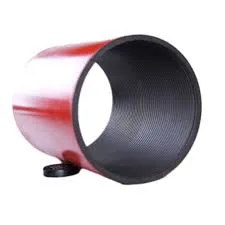- Afrikaans
- Albanian
- Amharic
- Arabic
- Armenian
- Azerbaijani
- Basque
- Belarusian
- Bengali
- Bosnian
- Bulgarian
- Catalan
- Cebuano
- Corsican
- Croatian
- Czech
- Danish
- Dutch
- English
- Esperanto
- Estonian
- Finnish
- French
- Frisian
- Galician
- Georgian
- German
- Greek
- Gujarati
- Haitian Creole
- hausa
- hawaiian
- Hebrew
- Hindi
- Miao
- Hungarian
- Icelandic
- igbo
- Indonesian
- irish
- Italian
- Japanese
- Javanese
- Kannada
- kazakh
- Khmer
- Rwandese
- Korean
- Kurdish
- Kyrgyz
- Lao
- Latin
- Latvian
- Lithuanian
- Luxembourgish
- Macedonian
- Malgashi
- Malay
- Malayalam
- Maltese
- Maori
- Marathi
- Mongolian
- Myanmar
- Nepali
- Norwegian
- Norwegian
- Occitan
- Pashto
- Persian
- Polish
- Portuguese
- Punjabi
- Romanian
- Russian
- Samoan
- Scottish Gaelic
- Serbian
- Sesotho
- Shona
- Sindhi
- Sinhala
- Slovak
- Slovenian
- Somali
- Spanish
- Sundanese
- Swahili
- Swedish
- Tagalog
- Tajik
- Tamil
- Tatar
- Telugu
- Thai
- Turkish
- Turkmen
- Ukrainian
- Urdu
- Uighur
- Uzbek
- Vietnamese
- Welsh
- Bantu
- Yiddish
- Yoruba
- Zulu
Differences Between Casing Coupling And Tubing Coupling
Differences Between Casing Coupling And Tubing Coupling
Commonly, OCTG couplings can be divided into casing couplings and tubing couplings. The function of casing couplings and tubing couplings is the same that to connect the pipeline each other. However, there are still some differences between the two.
Casing Coupling:
Casing couplingis available for sizes over 4 1/2 in. Different from tubing couplings, casing couplings generally do not need to be thickened (non-thickened), that is, casing couplings are not thickened, so there are the following types:
• BTC: Buttress Coupling
• LTC: Long Buttress Coupling
• STC:Short ButtressCoupling
The three types ofcasing body thickness are the same, only the length is different.
The oil casing coupling is an essential part for connecting two casings. The manufacturing method of the coupling is the same as that of the seamless pipe. The end of the steel pipe has an internal thread, which is connected with the upper and lower casings. In order to ensure the tightness of the joint, there are strict requirements on the accuracy of the thread.
Caing Coupling
Tubing Coupling:
Normally the maximum OD of tubing coupling is 4 1/2”, because the tubing is used for drilling activities, the coupling type is more diverse and strict than the casing, and the thickened thickened coupling (inner thickened and outer thickened ), referred to as EUE joint, is the most favorable coupling in oil pipe connection. The pipe with EU end (EUE) coupling connection is also called UPTBG. Due to the thickening (upsetting) of the pipe end, the connection stress is better than the ladder coupling.
Buttress couplings are another type used for tubing connections that have the same thickness as the pipe body and are called NU-end (NUE) tubing or TBG.
Feature of Tubing Coupling:
The oil pipe coupling can solve the problem of fatigue fracture of the existing coupling due to stress concentration. The end of the oil pipe is connected to the inner wall of the joint by tapered threads. The end of the coupling body and the oil pipe are connected with the same pitch flat thread. The coupling is not prone to fatigue fracture and has good connection effect. It can effectively prevent the occurrence of oil well string fracture accidents.
-
Tubing Pup Joints: Essential Components for Oil and Gas OperationsNewsJul.10,2025
-
Pup Joints: Essential Components for Reliable Drilling OperationsNewsJul.10,2025
-
Pipe Couplings: Connecting Your World EfficientlyNewsJul.10,2025
-
Mastering Oilfield Operations with Quality Tubing and CasingNewsJul.10,2025
-
High-Quality Casing Couplings for Every NeedNewsJul.10,2025
-
Boost Your Drilling Efficiency with Premium Crossover Tools & Seating NipplesNewsJul.10,2025








